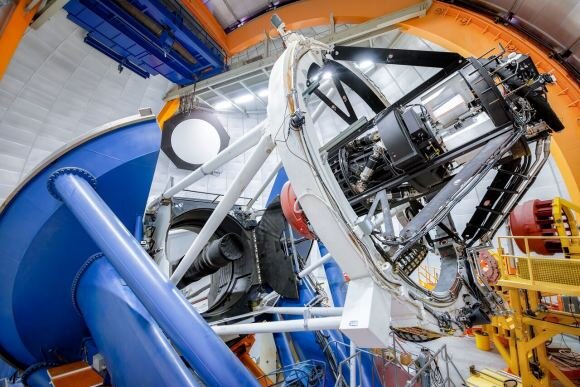The NOIRLab dark energy camera, located at the Cerro Tololo Inter-American Observatory in Chile, has made a new
The dark energy chamber was specially designed,to help dark energy researchers discover and understand dark energy. This is an invisible phenomenon that, according to physicists, is responsible for the acceleration of the expansion of the universe. But while the camera is looking for dark energy, it also takes amazing pictures of distant space objects.
 The DECam camera is installed on the 4-meter Blanco telescope.
The DECam camera is installed on the 4-meter Blanco telescope.
Photo: Department of Energy/FNAL/DECam/R. Khan/CTIO/NOIRLab/NSF/AURA
In the latest image published by NOIRLab,The Lobster Nebula is captured at a distance of about 8,000 light-years from Earth. At the center of NGC 6357 is the open star cluster Pismis 24. As you can see in the image, it contains unusually bright and massive stars.
Unlike the overwhelming redthe rest of the nebula, the regions surrounding these young stars are distinguished by a slightly bluish glow. It is caused by the ejection of ionized hydrogen gas from star forming regions. The nebula itself is a complex tapestry of gas, dark dust, newly born stars, and stars that are still forming.
 The Lobster Nebula NGC 6357, as observed by the Dark Energy Camera.
The Lobster Nebula NGC 6357, as observed by the Dark Energy Camera.
Photo: CTIO/NOIRLab/DOE/NSF/AURA
The image spans about 400 light years.To capture the details of the nebula, the DECam team used narrow-band filters. The scientists then combined and colored the photographs to create the final image.
Read more:
The space plane will deliver cargo to the ISS and land at a regular "airport"
A swarm of galaxies orbiting a single hyperluminous star was found in the early universe
Physicists explain Hawking's 'cosmic mismatch': how it will change science